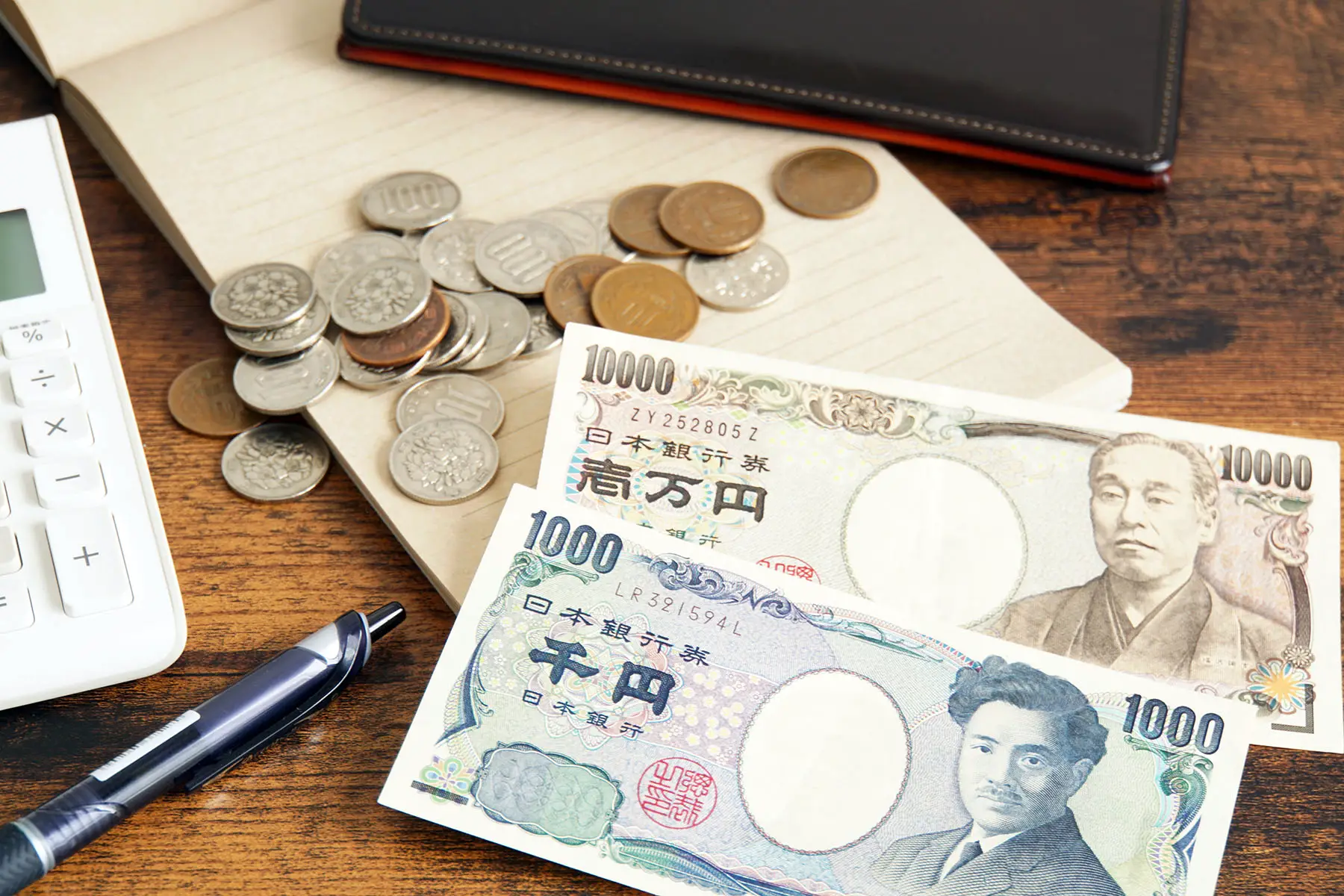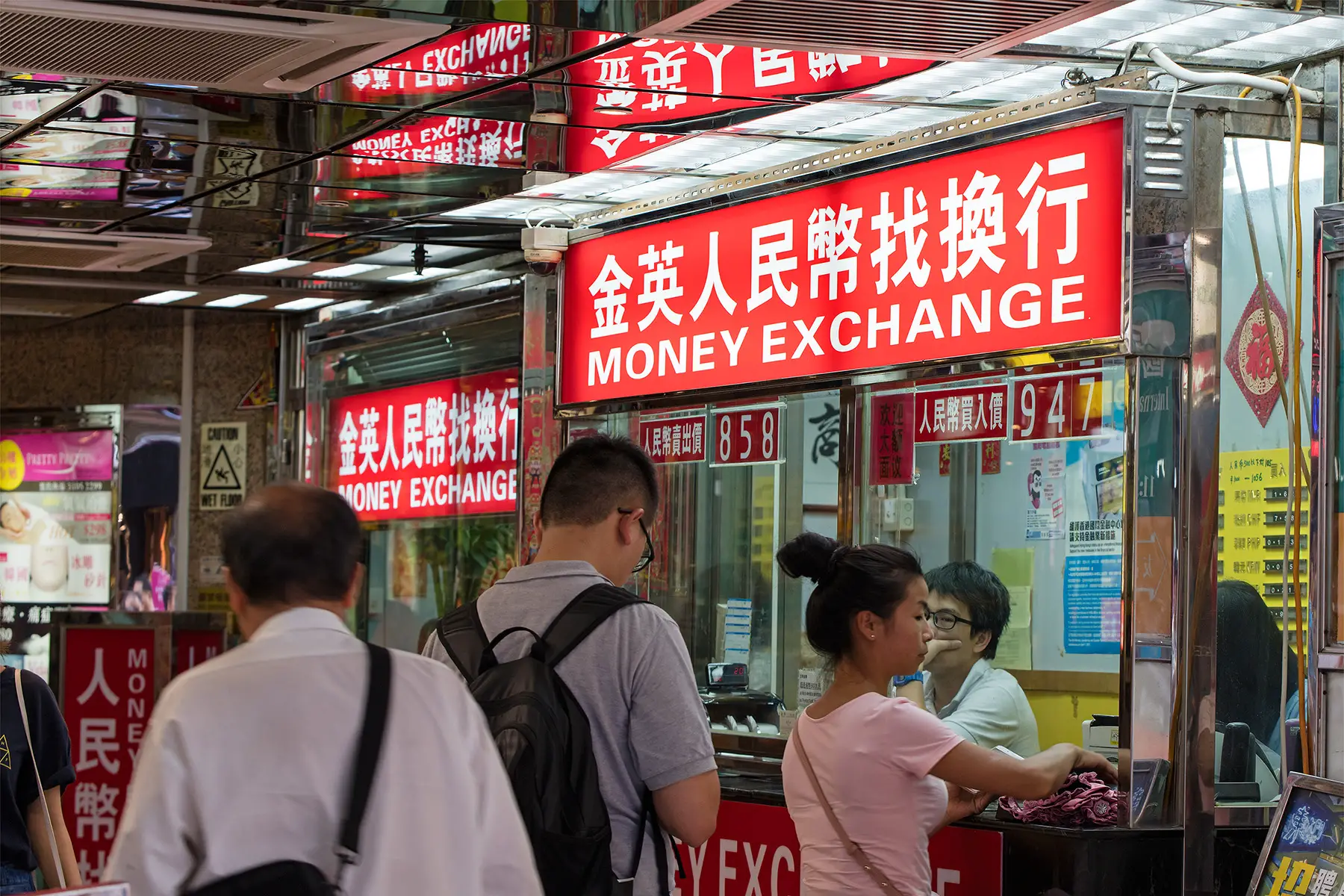Japan has a sophisticated financial services sector that includes an array of banks (銀行). If you relocate there, you can open an account with a Japanese or international bank operating in the country. Many of these offer cross-border services.
However, to make the best decision, you’ll need to know how everything works. Find out all the essential information on banking in Japan, including details on:
- The banking system in Japan
- Currency in Japan
- Banks in Japan
- Banking services in Japan
- Opening a bank account in Japan
- Payment methods in Japan
- Banking fees in Japan
- Offshore banking in Japan
- Ethical banking in Japan
- Banking security and fraud in Japan
- Making a complaint about banks in Japan
- Alternatives to using banks in Japan
- Useful resources
Wise
Do your finances go beyond borders? Then you need a fast and secure way to move money internationally. Wise is a global leader in online international money transfers, letting you move money at an exchange rate several times cheaper than your bank. Whatever your personal or business needs, Wise can make your money go further.
The banking system in Japan
Japan’s banking system is similar to that of many other countries that belong to the Organisation for Economic Co-operation and Development (OECD). It has a national central bank, the Bank of Japan (日本銀行 or 日銀), plus a commercial banking sector consisting of large city banks (都市銀行), regional banks (地方銀行), international banks, and newer digital/mobile banks (ネット銀行). There are also various other specialized financial institutions, such as mortgage brokers.

According to the Japanese Bankers Association (JBA), there are 218 private sector banks in Japan (2019). These include:
- City banks
- Regional banks
- Foreign banks
- Trust banks
- Other banks
- Bank holding companies
In addition to these are over 400 regional banking cooperatives. The Financial Services Agency (FSA) is the regulatory authority for the financial sector in Japan. You can find a list of licensed Japanese banks and other financial institutions on the FSA website.
Currency in Japan
The official currency of Japan is the yen (円/¥), which is the third-most traded (PDF) global currency after the dollar ($) and the euro (€). There are four notes (1,000, 2,000, 5,000, and 10,000 – 円札) and six coins (1, 5, 10, 50, 100, and 500 – 円玉) in circulation.

The Bank of Japan publishes daily exchange rates between the yen and the dollar/euro. You can also use a currency converter like Xe to check up-to-date rates.
Cash machines and ATMs in Japan
ATMs are widespread in Japan. However, not all take foreign cards. Japanese banks that accept international cards include:
- Japan Post Bank
- Seven Bank
- AEON Bank
- Mizuho Bank
You can find these machines at banks, post offices, convenience stores, and airports. Some ATMs are only accessible during certain hours, for example, 07:00–23:00. Japanese banks don’t currently participate in the Global ATM Alliance, so you will usually have to pay fees for using cards from overseas or from other banks. There is a standard charge of ¥110–220 per transaction. You will also usually have to pay a currency conversion fee plus those from your card issuer.
To find your nearest ATM in Japan, you can use a global locator service from Visa, Mastercard, or American Express. You can also check websites for Japanese banks, such as:
Banks in Japan
There are a number of different types of Japanese banks, most of which provide the same services but might differ in their geographical base and how they operate. You can find them on most high streets. Bank opening hours vary but are typically 09:00–15:00, most of them closing on weekends and national holidays. You can find counter services in most banks, however, you may need to make an appointment for certain services.
The FSA has a list of licensed banks and credit institutions in Japan.
National banks (都市銀行)
These are mostly city banks based in Tokyo (東京) and Osaka (大阪). National banks offer traditional services and are popular across the country. Some also provide services abroad. The national high-street banks in Japan are:
- Japan Post Bank (ゆうちょ銀行)
- Mizuho Bank (みずほ銀行)
- MUFG Bank (三菱UFJ銀行)
- Sumitomo Mitsui Banking Corporation (三井住友銀行)
- Resona Bank (りそな銀行)

Regional banks (地方銀行)
Regional banks in Japan are similar to national banks but are generally smaller and provide services within their region or prefecture. Most have their headquarters in cities and towns outside of Tokyo and Osaka. Regional banks may have a more limited offering than bigger ones and are less likely to have English-language services. These banks include:
- Bank of Kyoto
- Bank of Nagasaki
- Chiba Bank
- Hokkaido Bank
- Kumamoto Bank
- Yamagata Bank
International banks (外国銀行)
In addition to Japanese banks, there are also numerous foreign banks in Japan. These are generally very similar to national Japanese banks, the main difference being that they usually provide services in English (or the language native to the bank) as well as Japanese. International banks in Japan include:
- Bank of America
- Barclays Bank
- BNP Paribas
- Citibank
- Credit Suisse
- Deutsche Bank
- HSBC
- ING
- Intesa Sanpaolo
Trust banks (信託銀行)
These banks combine traditional banking with other services such as investment options, real estate brokerage, and tax planning. They assist individuals and corporations and allow their customers to transact with one another through contracts known as trusts. Japanese trust banks include:
- Custody Bank of Japan
- ORIX Bank
- SBI Shinsei
- SMBC Trust Bank
Digital banks (ネット銀行)
Digital banks include both online and mobile banks. These banks are slightly different – they usually operate purely digitally without physical banking branches. Most digital banks offer borderless services, which makes them convenient for people moving abroad. You can also typically open an account in a few minutes. The most well-known Japanese online banks include:
- AEON Bank
- Rakuten Bank
- Seven Bank
- Sony Bank
Other digital banks and transfer services you can use in Japan include Wise.
These banks offer similar services to those in high street locations, although they may not provide as many financial products. For example, some don’t offer mortgages or insurance. However, they are very convenient for those who like to bank online or with a smart device.
Banking services in Japan
Each Japanese bank provides its own range of products. Trust and city banks offer a more extensive range of corporate and wealth management. Cooperatives and regional banks may have a more limited offering, especially in digital services, whereas some online banks don’t provide products such as mortgages. In general, the main high-street retail banks offer the following:
- Current accounts – for day-to-day money management. These accounts offer different levels of service, from basic to premium, and include features such as debit/credit cards and overdrafts.
- Loans – available for items such as cars, holidays, and home improvements.
- Savings and investments – many banks offer savings accounts, stock options, pension products, and wealth management advice.
- Insurance – this can include property, vehicle, life, or health insurance.
- Mortgages – to help customers buy property in Japan.
- Online banking – the major banks now allow you to access your account and perform transactions via the internet.
- Mobile banking – many Japanese banks now have apps for smartphone banking.
- Business banking – products for those running a business, starting one, or working as a freelancer in Japan.
- Expat services – some Japanese banks are adapting to the growing international community, for example, multi-currency accounts, deals on international money transfers, and English-language assistance.
Opening a bank account in Japan
To open an account with a Japanese bank, you usually have to be a resident and provide a valid residence card. Some banks ask that you have lived in Japan for at least six months. If you don’t have a residence card or don’t meet the standard residence requirements, you may be able to use an employment contract as proof of residence. Otherwise, you may be refused an account or limited to a basic one.

If you have an account with a foreign bank that trades in Japan, transferring your account to a Japanese branch is usually fairly straightforward. Check with your provider for details on the process, as this can differ between banks.
Payment methods in Japan
Cash (現金)
Japan might be known as a tech-savvy nation, but it’s been slow to ditch cash payments, especially compared to neighboring countries such as China and South Korea. Recent studies have shown that consumers still use cash for 67.5% of all payments (2021), including some online ones. This is largely due to the konbini (コンビニ) payment service, where customers can go into a convenience store and pay online bills in cash within six days of the transaction.
Cash is still used for most smaller bills in Japan, for example, in grocery stores, cafes, on public transport, and for vending machines.
Checks (小切手)
Check payments are no longer common in Japan. Some banks may issue checkbooks, and most stores take checks if you have a valid guarantee card. However, these do not come as standard with most accounts – you usually have to request a checkbook from your bank. Charges may be higher than for other payment methods due to the infrequency of the service.
Debit cards (デビットカード)
Debit cards are much less popular than credit cards in Japan. Furthermore, many overseas debit cards either cannot be used in Japan, or the transaction charges are so high that it makes little sense to use them for general payments.
Some bigger Japanese and international banks offer debit cards, usually Visa. However, the IC card, similar to a debit card, is more popular in Japan. You can charge them up and use them in stores across the country. Popular brands include Suica and PASMO. However, JR/Tokyo Metro owns these brands, meaning the cards will only be issued in Tokyo and the eastern region of Japan.
Credit cards (クレジットカード)
Credit cards are more popular than debit cards and are the most commonly used online payment method in Japan. The advantage of credit cards is that you don’t necessarily have to settle the bill at the point of sale, instead paying it off later or in installments. However, fees are usually higher. Popular Japanese credit cards include global brands such as Visa, American Express, Mastercard, and the Japanese JCB card.
You can apply for a credit card from most Japanese banks if you have good credit. Some banks may stipulate that you have lived in the country for at least six months. You can also apply directly to credit card companies, although you will pay higher transaction fees if you don’t have a Japanese bank account. Bills are typically settled each month, though exact payment conditions vary between banks.
Direct debits and standing orders
You can use direct debits or automatic withdrawals (口座振替) in Japan for convenient payment of utility bills and other regular outgoings. Most Japanese banks provide this service. All you have to do is complete an authorization form from the company you want to pay, submitting your bank details. Once the company has this information, they can charge your bank account directly.
Online and mobile payments
Although 83% of people in Japan use the internet, digital and mobile payments haven’t taken off to the same extent as in many other technologically advanced countries. However, many young people are now switching to mobile payments, and several of the large banks offer their services via mobile apps.

In addition to big global mobile payment service providers and digital wallets such as Apple Pay, Google Pay, and PayPal, there are a number of popular Japanese mobile payment options. These include:
- Edy
- Line Pay
- PayPay
- Rakuten Pay
Local money transfers
You can do a direct money transfer (口座振込) to another bank account in Japan via an ATM or your local bank. This is a common and easy way of transferring funds between accounts.
To make a transfer, you will need the recipient’s details:
- Name
- Bank
- Branch name
- Account number.
International money transfers
You can send money abroad from Japan direct from your own bank account. Most major Japanese banks provide this service. However, costs can be high, especially for large amounts. Another option is to use a specialist global money transfer service. This is usually both quicker and cheaper. Examples of international money transfers services include:
- CurrencyFair offers international money transfers to over 150 countries. They have exchange rates up to eight times cheaper than the banks, helping you avoid excessive bank fees.
- Wise is an international money transfer provider available in 59 countries that offers transfers between cross-border bank accounts up to eight times cheaper than traditional banks.
International money transfer fees usually depend on the amount you are sending. Some transfer services do this for free up to a certain amount, although you will usually pay more through the exchange rate. Most transfers are completed within three days, but very large amounts may take a little longer.
Banking fees in Japan
Banking fees in Japan can vary greatly across the different providers and account types. Most banks will provide a certain level of service for free, but you will probably incur monthly charges if you regularly use your account for a wide range of purposes. It’s a good idea to shop around and consider what the different banks will charge you for the services you use the most.

Here is a rough guide to banking fees:
- General administration – most of the main banks offer free standard accounts, although high-end accounts and some trust banks charge fees, typically around ¥1,000–2,000 a month. You may also have to pay to receive bank statements or new bank cards.
- ATM use – varies from free to ¥220 depending on bank and time of day, plus card issuer and currency conversion fees if you use a card from overseas.
- Debit and credit cards – debit cards are often free in Japan, but many credit cards have fixed yearly fees, which can range from ¥500–12,000, depending on the card. You must also pay annual percentage rate (APR) charges and fees for overseas transactions.
- Loans and mortgages – you must pay APR charges. There may be an additional one-time admin fee which varies across providers.
- Local money transfers – range from free to around ¥600.
- International money transfers – up to around ¥3,500 online or about ¥7,500 at a bank branch, plus exchange rate fees.
- Penalty fees – you may be charged for late payments, defaulted payments, or if you exceed your overdraft.
Each bank should provide you with a full fee list when you open an account. Most banks also have details of fees on their website.
Offshore banking in Japan
Japan has fairly strict residency requirements for most accounts. For example, some banks only offer accounts if you’ve lived in the country for at least six months. However, some Japanese retail and savings banks have a range of offshore banking options, such as non-resident accounts. This could be a useful option if you spend a lot of time in Japan or do business there from outside the country.
Ethical banking in Japan
All Japanese financial institutions are encouraged to develop more sustainable business strategies in today’s marketplace. In fact, the Japanese Bankers Association (JBA) has a code of conduct that member businesses should adopt. This covers areas such as respect for human rights, environmental preservation, and involvement in local communities. Many banks in Japan now have Corporate Social Responsibility (CSR) policies covering sustainable investment, business philanthropy, and transparency of practices. Furthermore, many newer online and mobile banks have environmental sustainability and customer-centered approaches built into their business model.
However, leaders in the Japanese banking field still have plenty of room for improvement. Recent analysis of three of the country’s big city banks found that, although progress was being made, none were top-rated in any area of environmental and social governance (ESG).
If you want to find out about the ethical performance of banks in Japan, you can check bank websites for information on CSR approaches. You can also check performance rankings on global sites such as CSRHub or Corporate Knights.
Banking security and fraud in Japan
The increasingly digital nature of banking has made consumers vulnerable to new types of security and fraud threats. Japanese customers lost ¥27.8 billion (approx. €196 million) in phone and email scams in 2021, according to the National Police Agency (NPA).
Although this figure seems worrying, Japanese banks offer excellent personal security on their accounts, and many provide biometric protection and high levels of encryption.
Common scams to look out for include:
- Phishing – suspicious emails, texts, or calls asking for personal information
- Card cloning – where bank card details are stolen and duplicated
- Public Wi-Fi scams – when fraudsters steal details using unsecured public Wi-Fi hotspots

To protect your Japanese bank account:
- Always access your account online through the website directly. Never click on a web link in a suspicious email.
- Don’t give confidential information such as your bank card details in an email or phone call unless you are sure you are dealing with a trusted source.
- Keep your PIN to yourself and only use it when accessing your account or performing a card transaction.
- Only use secure and verified payment platforms when shopping online.
- Avoid logging into your bank account on shared devices.
- Take advantage of heightened security measures such as biometric protection.
Lost or stolen bank cards in Japan
If your credit or debit card is lost or stolen in Japan, you should inform your bank immediately. Emergency contact numbers should be available on bank websites. Make sure you also report any theft to the police.
Global numbers for major card providers are:
- Visa: +1 303 967 1090
- Mastercard: +1 636 722 7111
- American Express: +1 801 849 2124
Making a complaint about banks in Japan
If you need to complain about a bank in Japan, you should first contact the bank itself. Each should have a complaints procedure and a department you can contact to resolve the issue. Banks should provide details on their website or in an information pack when you open an account.
The next step if the issue remains unresolved is to contact the JBA, the designated dispute resolution organization for most banks in Japan. The JBA will mediate between the two parties. If this is unsuccessful or the bank doesn’t respond within two months, the JBA escalates the complaint to its Mediation Committee. However, this is optional and rarely happens.
As a last resort, if you are still unhappy after this process, you can take the matter to a Japanese court. Bear in mind, however, that this can be costly and time-consuming.
Alternatives to using banks in Japan
Japan has an extensive network of alternative financial institutions regulated by the FSA. These include:
- Credit Associations (Shinkin, 信用金庫)
- Credit Cooperatives (Shinkumi, 信用協同組合)
- Labor Banks, or Credit Unions (Rokin, ろうきん)
These are all local or regional membership organizations providing services such as deposit accounts and low-interest loans. You typically have to be a resident within the institution’s area, although some work with non-residents and non-members. Most provide Japanese-only services.
Another more recent model is the community power bank. These banks provide non-profit citizen finance and fund projects that benefit the local community. To open an account, you usually have to become a member, make an initial investment, and come up with a suitable project idea supported by the community. One such bank in Japan is the Tokyo Community Power Bank (in Japanese).
Useful resources
- Bank of Japan – central bank in Japan
- Financial Sevices Agency – regulatory authority for Japanese financial institutions, including banks
- Japanese Bankers Association – membership organization for Japanese banks that also provides a dispute resolution service






